Review Summary
Expert Rating
OPPO has made great strides in the premium mid-range segment by launching attractive smartphones with powerful specs. However, the company has not made a similar impact in the affordable segment, often losing out to its own offspring Realme. We have seen phones like the Realme 6i (review) earlier this year, which made a mark as one of the cheapest phones with a 90Hz display. Now, OPPO is trying to match that with its own 90Hz phone, the OPPO A53.
The OPPO A53 is a budget smartphone with a starting price of Rs 12,990. The main attraction of the device is that it offers a 90Hz screen. In addition to this, the OPPO A53 offers a punch-hole display, a 13MP triple camera setup, Snapdragon 460 SoC, and a 5,000mAh battery. But at Rs 12,990, does the OPPO A53 pack enough bang for the buck to take on the Realme 6i, Redmi Note 9 (review), and more?
Verdict
The OPPO A53 clearly wants to sell you on the 90Hz display and that really is the biggest feature here. While you do get a smooth display, the HD+ resolution leaves you wanting for more. As for everything else, the OPPO A53 is acceptable, but not entirely satisfactory.
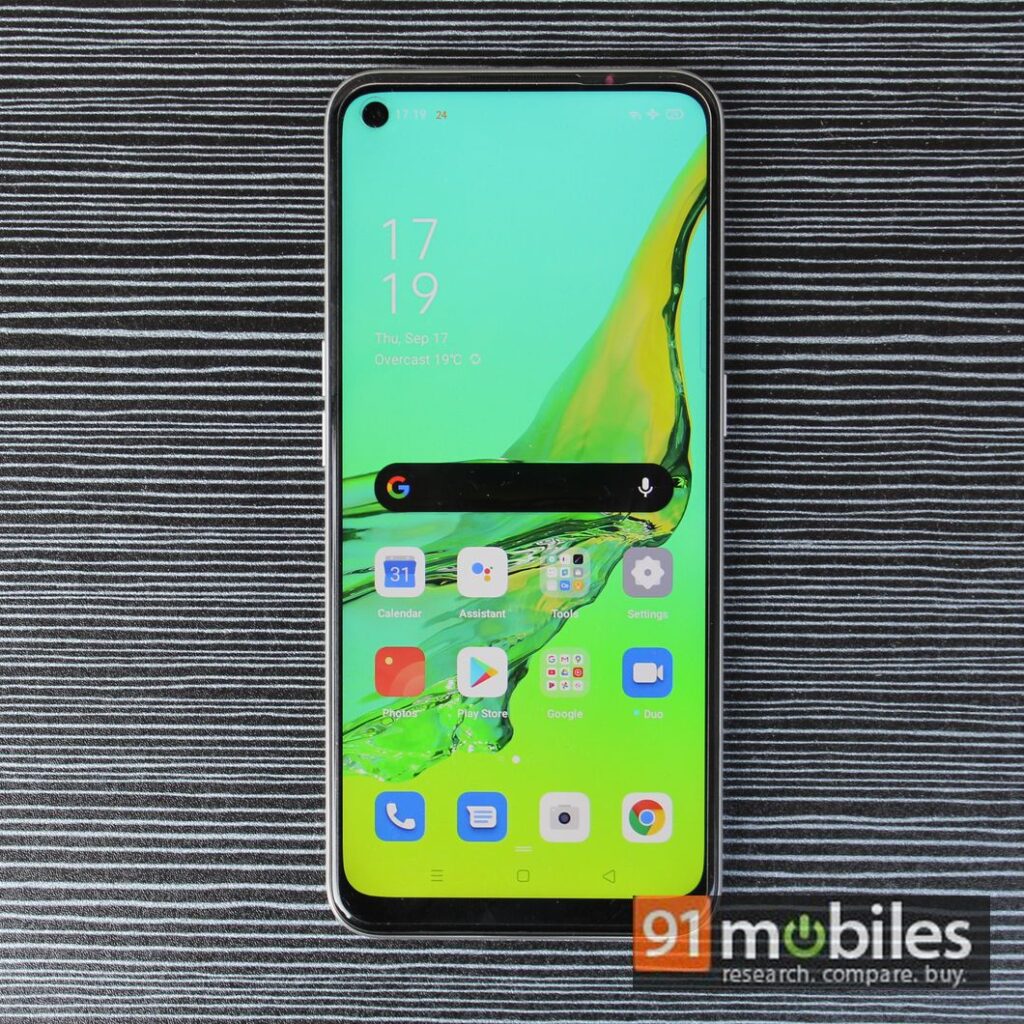
Design and display
- Display: 6.5-inch HD+ LCD
- Refresh rate: 90Hz
- Connectivity: Triple card slot, Type-C port, 3.5mm headphone jack
The OPPO A53 may not be as attractive as the F17 Pro, but it looks decent for its price. In fact, it’s not too different from its Realme-branded brothers. You get a hole-punch display at the front and a curved rear panel in a glossy finish. The phone comes in Electric Black, Fairy White, and Fancy Blue colour options. We received the Fairy White option for review, which looks elegant and classy. The colour will hide any fingerprint or smudges that are sure to be seen on the other two options.
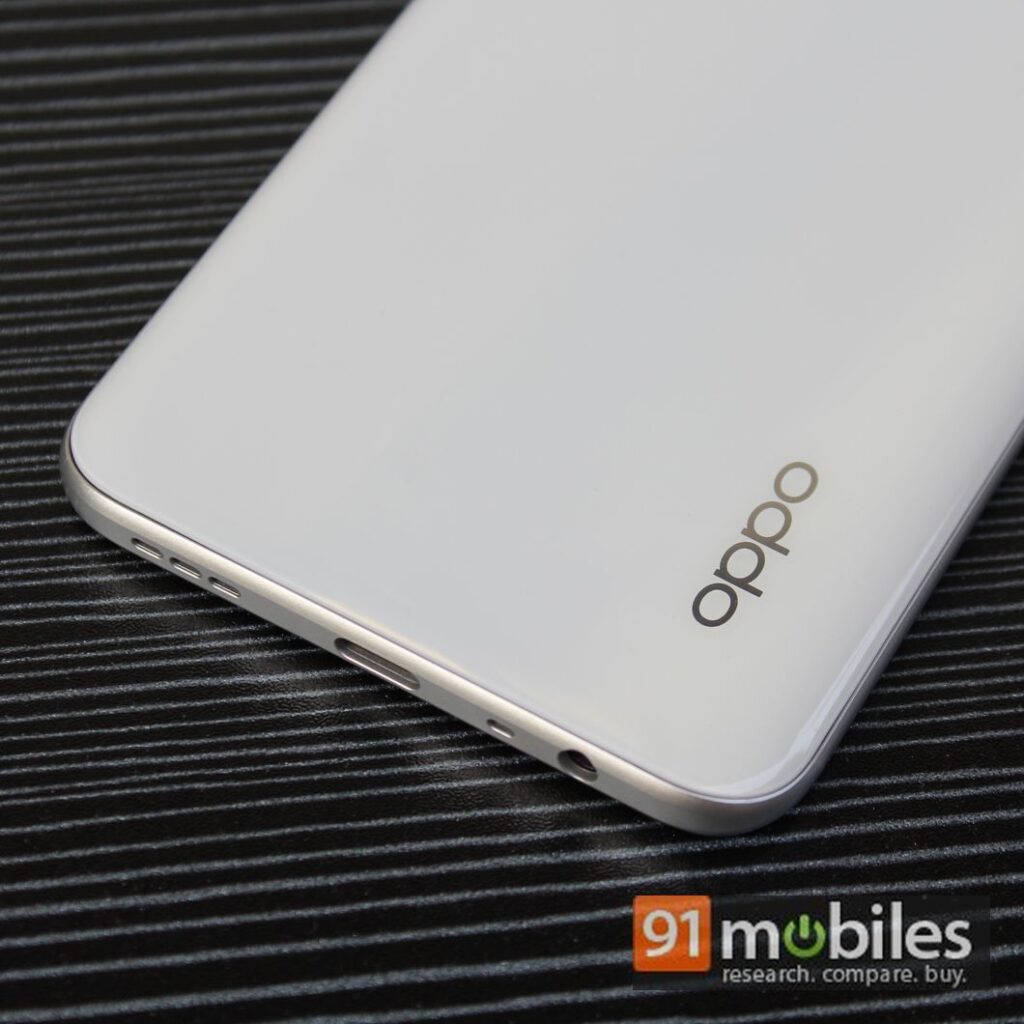
The rear panel features a fingerprint sensor and a rectangular camera module that houses three sensors and an LED flash. There is a 3.5mm headphone jack, Type-C port, and a single speaker grille at the bottom. The phone supports a triple card slot for two nano-SIM cards and a microSD card.
The OPPO A53 has a good in-hand feel and at 186 grams it doesn’t feel too heavy. The buttons on the side are solid and offer a nice clicky feel. Most tasks can be performed with one hand, but you will need to occasionally adjust your grip to reach the top of the screen.
Coming to the display, the OPPO A53 sports a 6.5-inch HD+ (1,600 x 720) screen with an 89.2 percent screen ratio. The highlight of the display is that it gets a 90Hz refresh rate to offer a smooth scrolling experience. The high refresh rate does look good, but we noticed stutters while scrolling, which seems to be a chipset-related issue.

While a high refresh is a selling point, the HD+ resolution is not. You can find phones with FHD+ resolution starting from Rs 10,000 now, so the 720p limit does affect the viewing experience on the OPPO A53. Videos and texts won’t look as sharp, although colours on the screen look pretty good. What we did appreciate, however, is the support for stereo speakers, which helps improve the experience of streaming movies and playing games on the phone.
Camera
- Rear cameras: 13MP primary, 2MP macro, 2MP depth sensor
- Front camera: 16MP primary
The cameras on the OPPO A53 don’t scream out exciting, at least not in this price segment. The 13MP primary camera is accompanied by a 2MP macro lens and a 2MP depth sensor. There is no wide-angle lens on the phone, which we feel would have been a better option compared to a 2MP macro lens. The camera app is easy to use and familiar for anyone who has used an OPPO or Realme smartphone. You get features like HDR, Dazzle Color, portrait mode, AI beautification, and so on.
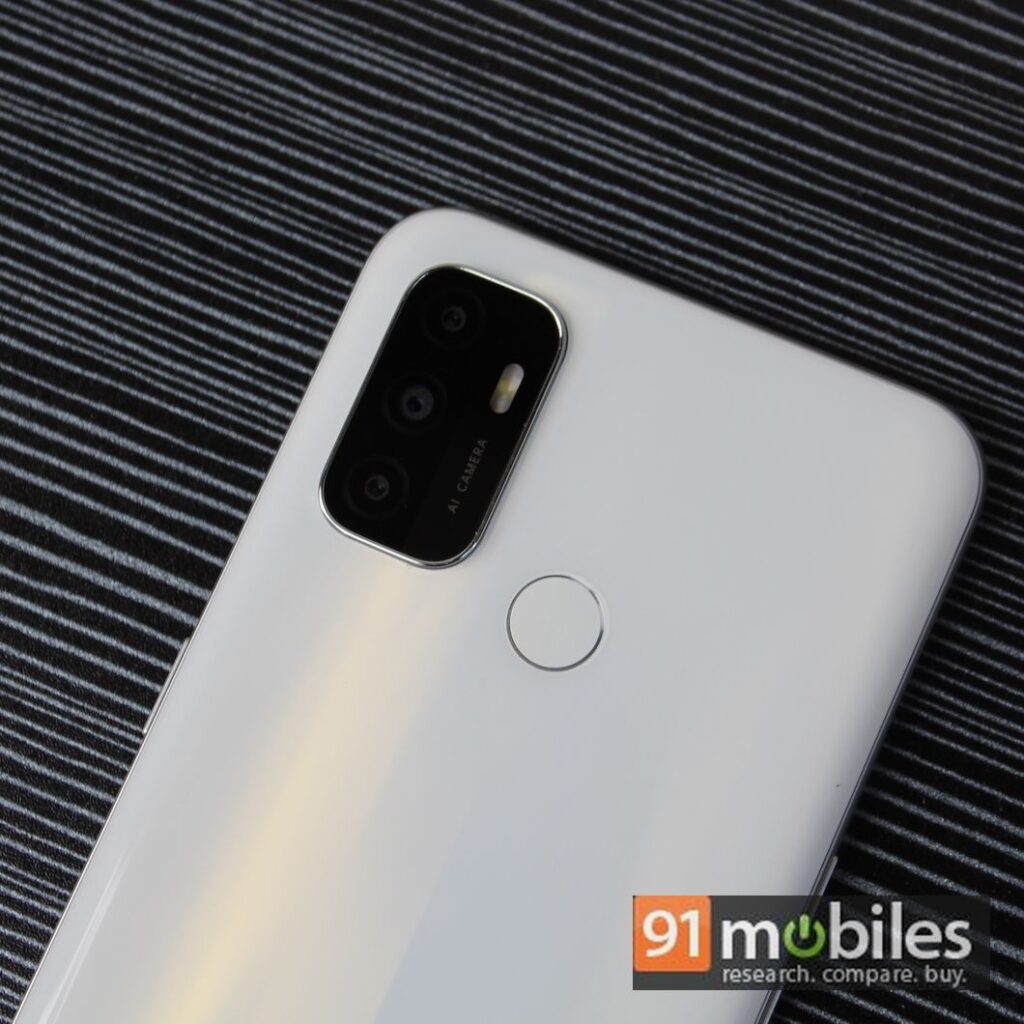
The 13MP primary camera can capture decent photographs in daylight photography, but don’t expect images to look very sharp or detailed. We also found colours to look washed out without AI Dazzle Color. With the mode enabled, you’ll be able to capture slightly better hues, although the algorithm does not aggressively boost colours. The dynamic range is decent and it does improve the highlights and shadows compared to photos taken without HDR mode.


We found the camera shutter speed to be quite slow, resulting in blurry photos being captured more often than we would have liked, even in bright daylight. The 2MP macro lens works about as well as you can expect. It is best used with plenty of light around as close up shots will look noisier compared to regular close up photos taken by the primary camera. The OPPO A53 lacks a dedicated Night Mode, which is quite disappointing in this price segment as almost every other competitor offers the feature. Without a low-light mode, night shots captured by the OPPO A53 look dark and noisy.
The 16MP selfie camera captures selfies with good colour reproduction and skin tones in daylight. Selfies don’t look very detailed, but they are usable for sharing on social media especially when the AI beautification doesn’t overtly smoothen the skin. The selfie portrait mode does a very average job at subject separation and we found the algorithm to unnaturally oversharpen the image.
Performance and software
- Chipset: Qualcomm Snapdragon 460
- RAM: 4GB and 6GB
- Storage: 64GB and 128GB
- Software: Android 10 with ColorOS 7.2
Another curious move from OPPO was to go with the Qualcomm Snapdragon 460 chipset. The budget processor doesn’t really stand out in a segment filled with phones powered by MediaTek Helio G90T, Snapdragon 720G, and so on. The OPPO A53 doesn’t impress much on benchmark platforms like Geekbench and AnTuTu, and you will have to keep your expectation low when it comes to performance on the OPPO A53.
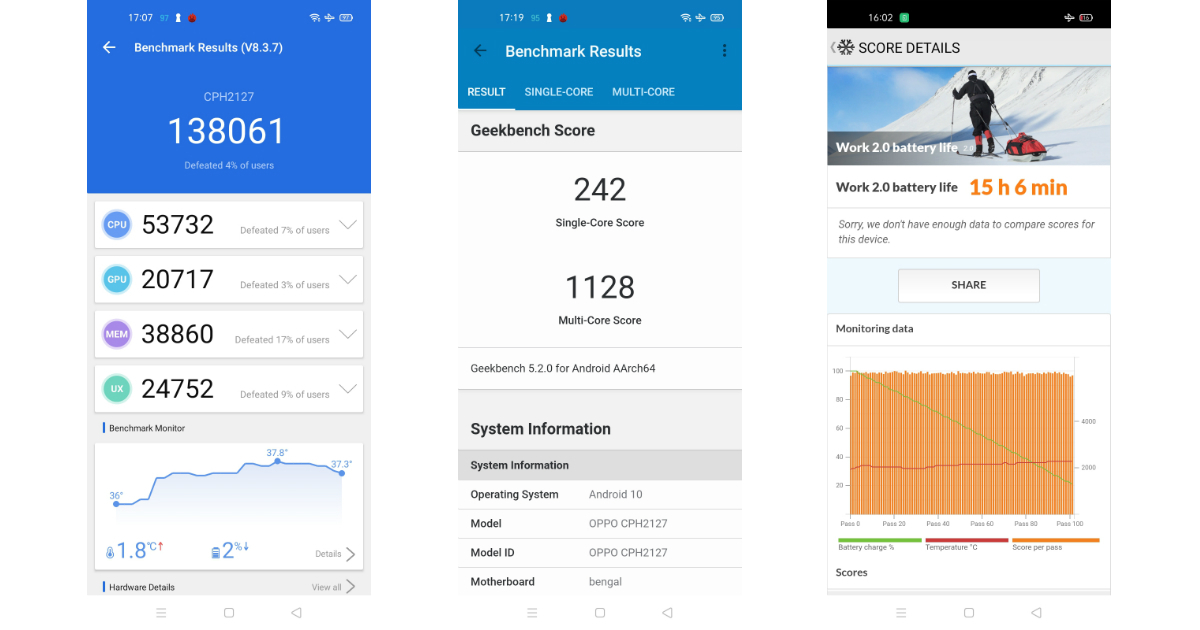
The smartphone can handle basic day-to-day tasks like messaging and social media browsing without hassle, although opening apps can feel sluggish. We received the 4GB RAM variant for review, which can slow down the speed at which you multitask and switch between apps. The 6GB RAM option might prove more useful, but the variant costs Rs 15,490 at which price you’ll find far more powerful alternatives.
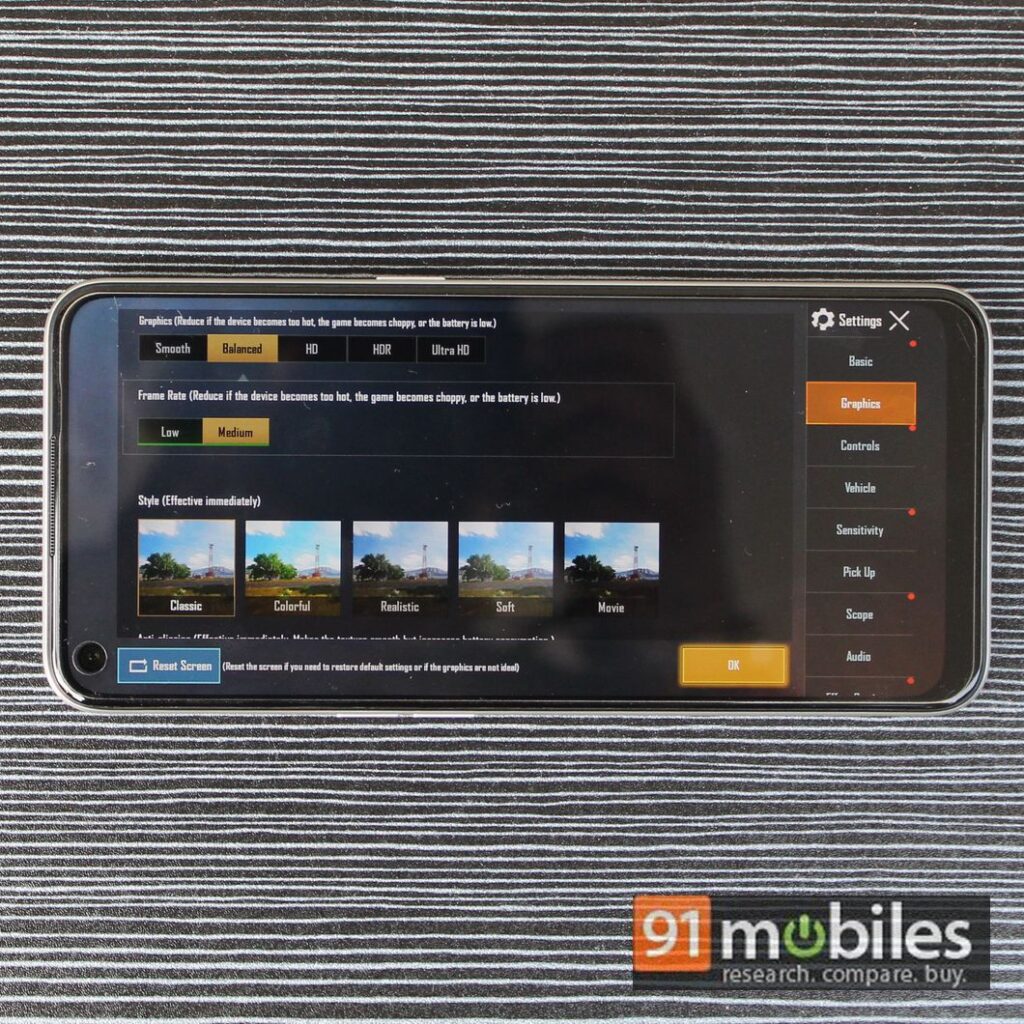
The OPPO A53 can run games like PUBG and Call of Duty Mobile on medium graphics. We ran PUBG (before it got banned) on both Smooth + High and Balanced + Medium graphics settings. While you won’t get ultra-clear graphics and really smooth motions, we found the gameplay experience to be decent. There were a few lags and stutters along that way, but that is to be expected from this chipset. The phone also got slightly warm after a 30-minute session.
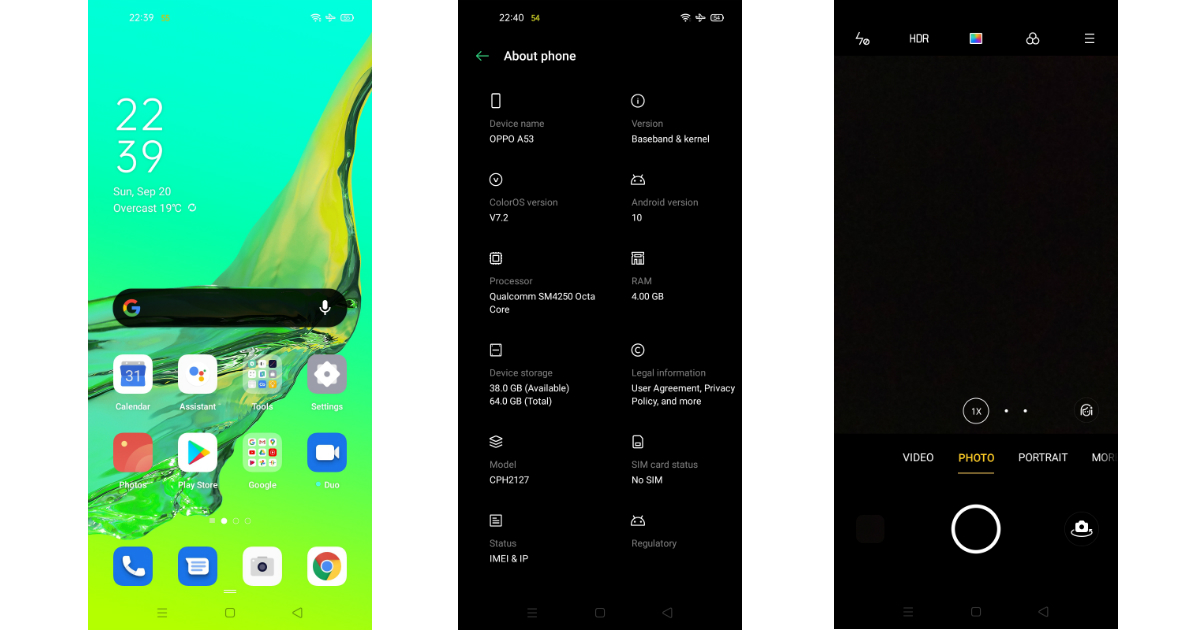
Again, the stereo speakers on the OPPO A53 are appreciated, especially while playing games. It makes the experience more immersive and does give the phone an edge over the competitors in this segment. The speakers can get quite loud, although they’re not the cleanest and nicest sounding speakers in the segment. There is a 3.5mm headphone jack for wired listening as well.
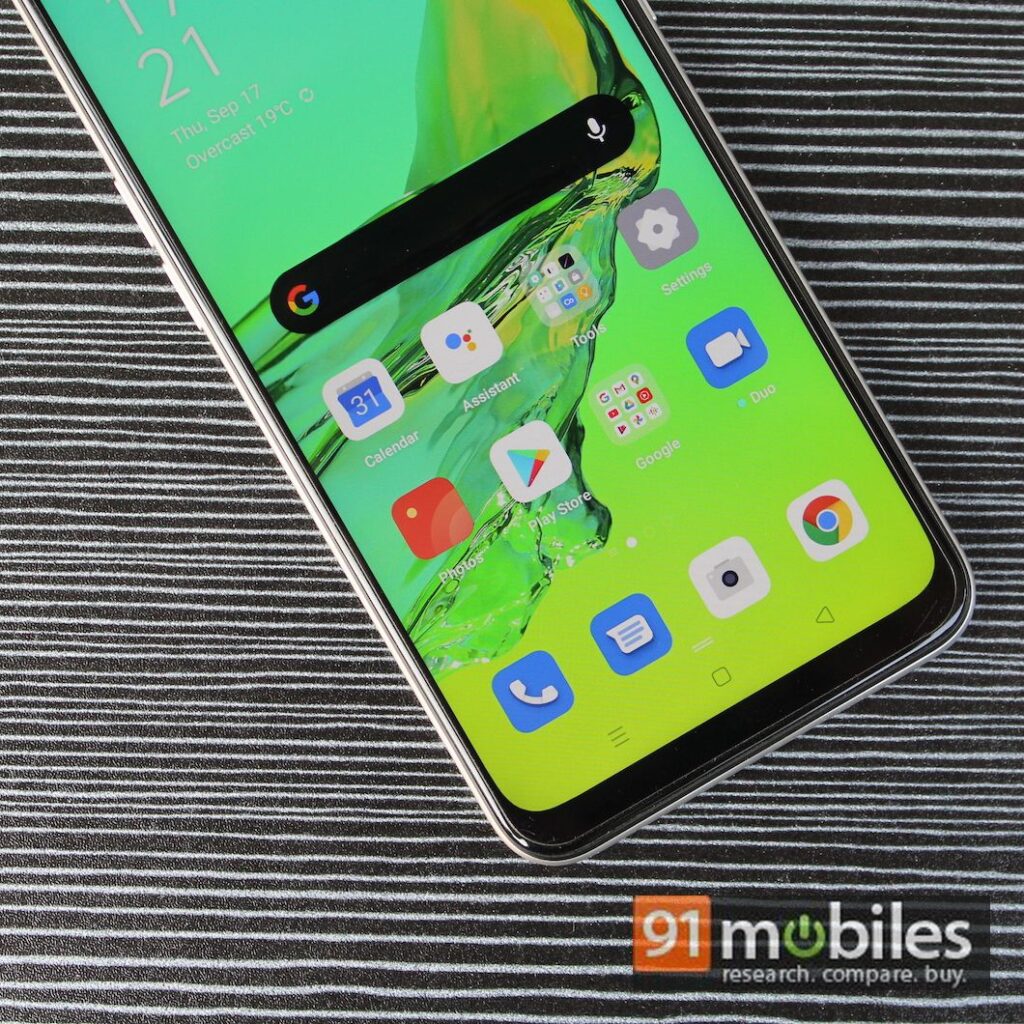
OPPO A53 runs Android 10-based ColorOS 7.2 and our unit was on the August security patch. ColorOS comes with system-wide night mode and far less bloatware as was seen a few months ago. With fewer pre-loaded apps, the UI looks cleaner and easier to navigate. Swiping right brings up Google’s Discover feed and swiping up pulls up the app drawer.
Battery
- Battery: 5,000mAh
- Charging speed: 18W fast charge
- PCMark Battery test: 15 hours
- 0-100 percent: 2 hours 45 minutes
The OPPO A53 packs a respectable 5,000mAh battery, which delivers an all-day battery life with heavy usage. By heavy usage, we mean constant messaging, a few hours of social media browsing, and about an hour or two of gaming or video streaming. We managed to get an average of 5 hours of screen on time on a single charge, which was pretty good. In our PCMark battery test, the OPPO A53 lasted an impressive 15 hours.
You get an 18W fast charger in the box that takes roughly 2 hours and 45 minutes to charge the device from 1 to 100 percent. It’s clearly not the fastest charging device we have seen in this segment.
Final verdict
The OPPO A53 faces some tough competition in the sub-Rs 15,000 segment. Phones like the Realme 6i, Redmi Note 9 Pro, and so on offer a well-rounded package, delivering excellent performance, solid cameras, FHD+ displays, and great battery life. The OPPO A53 falls short in several areas compared to the rivals. It offers an HD+ display, an underwhelming Snapdragon 460 SoC, and an average set of cameras.
The way we see it, there are two reasons to buy the OPPO A53 – 90Hz display and stereo speakers. The former offers a smooth scrolling experience and is pleasing to the eyes, though undercut by an average screen resolution. The latter makes streaming movies and playing games a delight. If these two features are what you’re looking for, then the OPPO A53 is a decent buy. However, you will get more bang for your buck if you consider what the rivals are offering.
Editor’s rating: 3 / 5
Pros:
- 90Hz display
- Stereo speakers
- Good battery life
Cons:
- Underwhelming performance
- HD+ resolution
- Average cameras
















![[Update] OnePlus mistakenly announces Google Gemini Ultra AI coming to its phones later this year Thumbnail](https://www.91-cdn.com/hub/wp-content/uploads/2024/04/OnePlus-AI.jpg?tr=h-110,q-100,pr-true)









